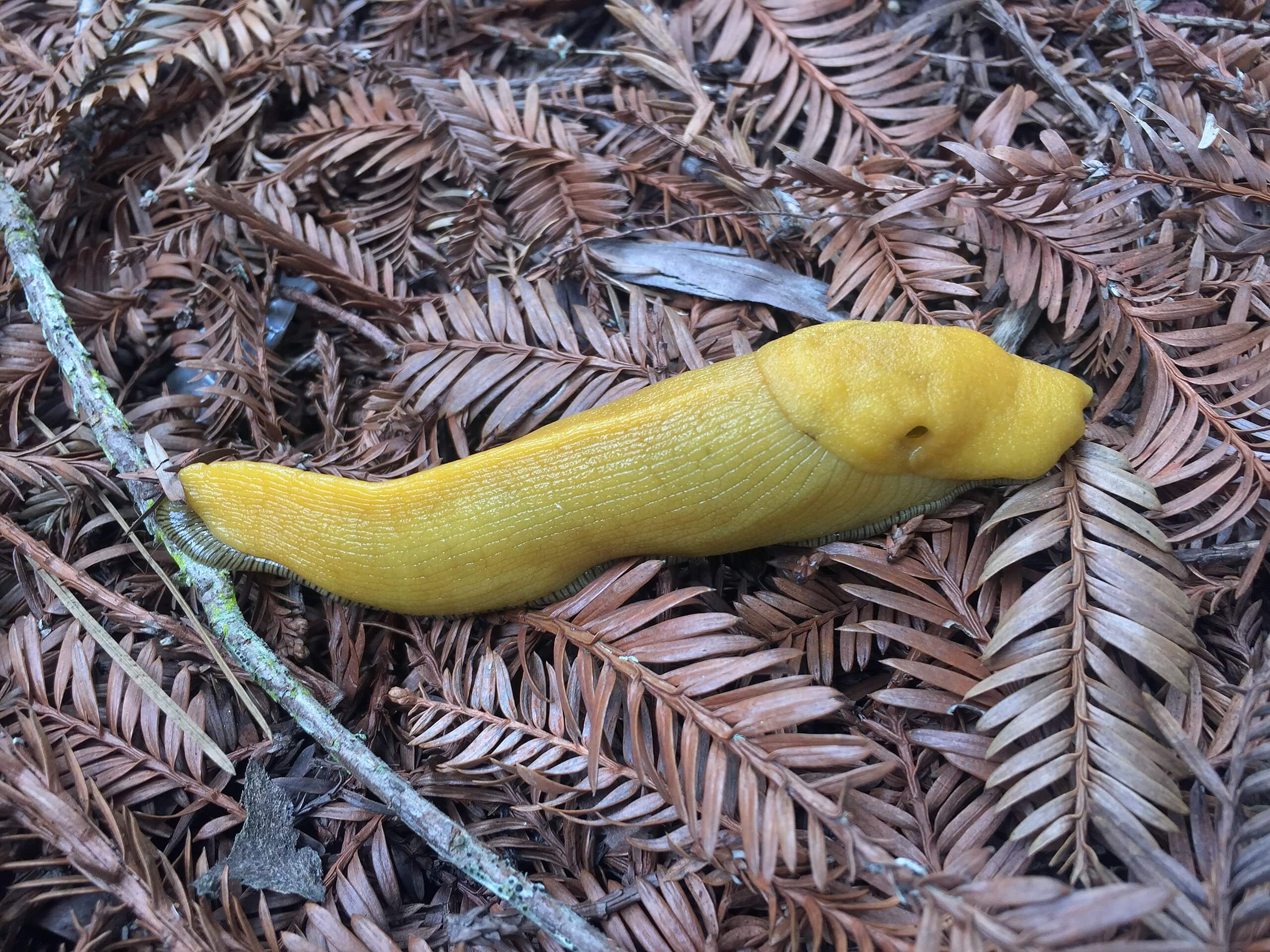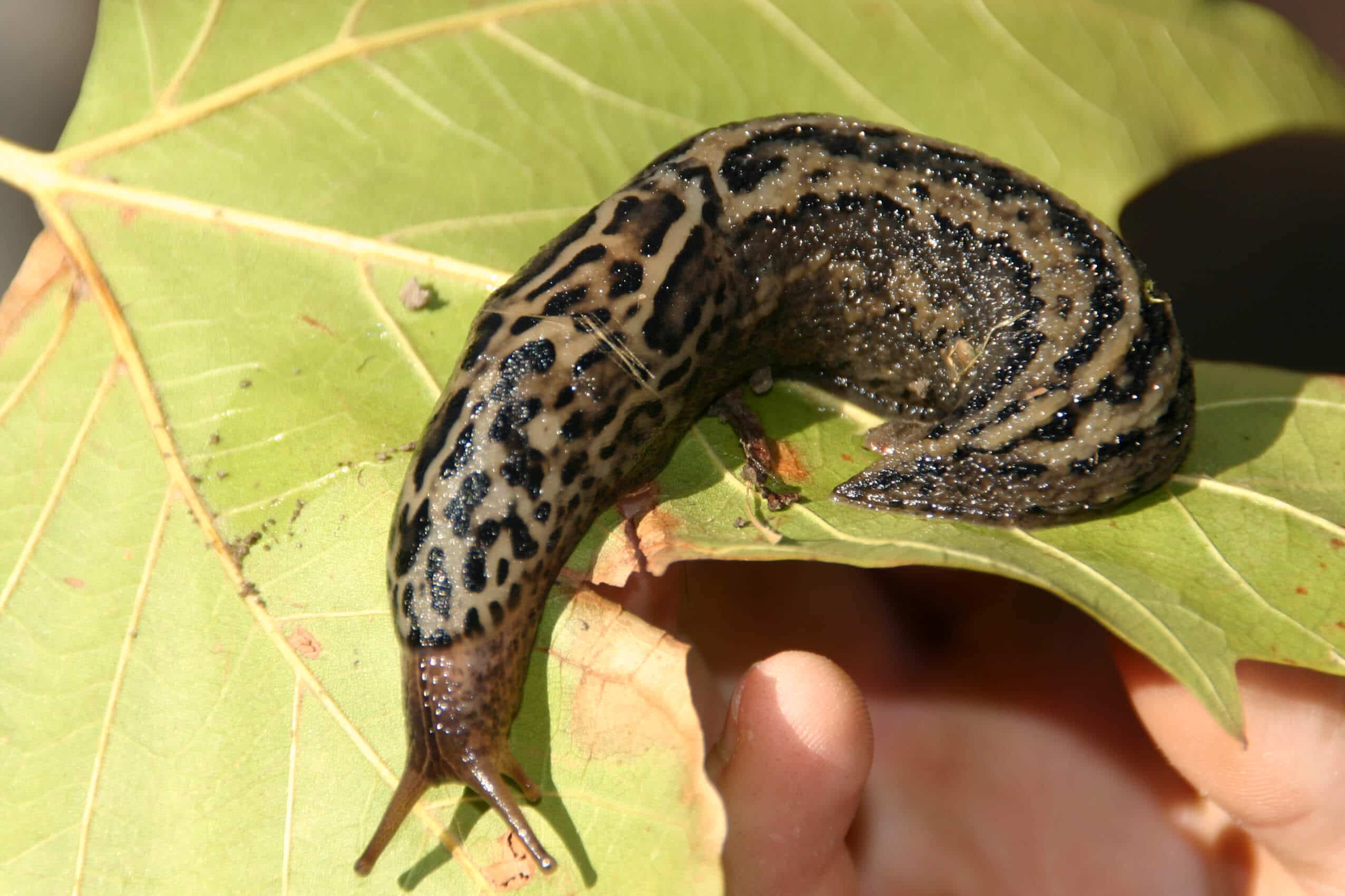Do you have any childhood stories of a sibling, or perhaps even yourself, eating garden worms? How about slugs? It’s not only curious children who have had a gourmet encounter with these garden creatures. Wild food foragers have collected and prepared a certain slug species for centuries. Whilst many of us find the idea of eating slugs a bit squeamish, others have managed to look past the slime and appreciate slugs as a wild food source. Many people still forage these land molluscs today, even creating annual festivals in their honour!
Slugs belong to the Gastropoda class, which contains a large number of superfamilies, from sea slugs to snails. ‘Land’ slugs are typically found in the moist undergrowth of woodlands, forests and urban areas, particularly under logs, rocks and amongst damp vegetation. They are a common animal group found throughout the world, with different families and species holding native habitats in different climates and altitudes.

US Slug Species
Within the US, native slugs include families like the brilliantly named Banana slugs (Ariolimax), which contains relatively common species like the Pacific Banana slug (Ariolimax columbianus) and California Banana Slug (Ariolimax californicus). All with bright yellow colours and darker markings, much like a banana! Other native genus include the taildropper slugs (Prophysaon) and mantleslugs (Philomycus).

Invasive Slug Species
There are a number of invasive species that have been introduced to the US through the trade and transport of crops and plants from Europe. These include the now common Black slug (Arion ater L.) and gray garden slug (Deroceras reticulatum), as well as the Spanish slug (Arion vulgaris). The Leopard slug (Limax maximus) is also now a common find in the wild.
Slug Physiology
Slugs are largely water based, which is why they are covered in a protective mucus membrane to protect themselves from drying out. Their mucus holds other functions too, like deterring predators because of its foul taste, or even to aid in mating. Leopard slugs, for example, hang together from a secretion of mucus whilst mating. Slugs are hermaphrodites, which means each animal can be both sexes, and they do not tend to follow any particular breeding season.
Most slug species can still contain the remnants of a shell within their bodies, known as a vestigial shell. All species have a tail, tentacles (feelers), a mantle (which contains respiratory and genital organs) and also the ‘foot’ and fringing, which contracts like a muscle to help the slug move.

Why Are Slugs So Special
Slugs are incredibly vital members of our ecosystems. They help to break down dead organic matter like decaying plants and sometimes animals. They even have a small role to play in spreading seeds and even spores, as fungi is often a favourite food source. So, like earthworms, they are incredibly important animals.
Slugs As Pests
Whilst slugs have a necessary role to play in our gardens and the wider environment. They of course provide a headache to gardeners and farmers alike. Whether you’re growing food in your own vegetable garden, or attempting to maintain immaculate floral borders. Slugs can really be a garden pest as they munch through leafy greens exceptionally quickly.

Whilst farmers tend to turn to stronger control measures like pesticides, gardeners have developed age old tricks for keeping them at bay. From crushed egg shells and beer traps, to night time removal sessions. What ever works best for you, just try to avoid harsh chemical pesticides if possible!
They really can be an invasive species, but it is possible to control them. Leopard slugs are a particular nuisance, and are one of the most common pest slugs of North America. Of course eating them is always an option…
Foraging Slugs: Which Species and Where to Look
The most common and popular slugs for foraging within the US were once Banana slugs. However their populations have decreased slightly as invasive species compete for habitat. If possible, limit your collection of banana slugs, and instead seek out more of the invasive Leopard slug species.
As with most foraged foods from the wild, it is best to avoid collecting them in urban areas, due to the higher risk of pollution. Although as you will read later, preparing slugs for consumption involves a period of purging that helps to remove contaminants from their digestive system.
The best time to look for slugs is during or after rain, when the ground is particularly moist. They would generally be most plentiful in spring and autumn, when the weather is wetter and the ground less likely to be frozen. In winter slugs are likely to be underground hiding and hibernating.

Serving Up Slugs
It’s not just the French who enjoy preparing land molluscs… Whilst the French do not actually include slugs within their menus (only snails), there have been other cultures that do include these gastropods in their diet.
Native American groups such as the Yurok natives, and even some European immigrants relied on Banana slugs as part of their diet when other food supplies were low. Banana slugs can often weigh up to 4 ounces, and grow up to 25cm(9.8 inches) in length, making them a fairly substantial food source. Even today many wild foragers also prepare slugs out of curiosity and interest. An annual festival is even held for them in the Northwest. ‘Slug Fest’ includes a number of slug activities, from races to recipe contests! Slug enchiladas anyone?
The majority of feedback from those who have consumed them seem to be that slugs have a limited taste, but a texture not unlike squid or abalone. But for all there is to know about the ins and outs of slug eating, you can check out this post from the Feral Food blog, as they have the best advice for preparing them! They cover in full detail how to ‘purge’, prepare and cook slugs for maximum taste, and also all best practices. Information on eating slugs is still quite limited, and there are a small number of well known edible species which it is best to stick to.

Risks to look out for
Whilst eating slugs is possible, there are a few methods that must be followed for careful preparation. This includes purging, which is essentially feeding the slugs on a set diet of clean leafy vegetables, to know that any foreign contaminants have been processed and removed. Again for best practices check out the fascinating blog post by, Feral Food for preparation steps and why each step is necessary.
Like most other gastropods, slugs can carry parasitic nematodes, which can transfer to humans. They have the potential to cause diseases (such as meningitis) which can have detrimental health effects and even cause death. So it’s best to wear gloves and ensure the slugs are correctly cooked before you tuck in. Cases are extremely rare, but slugs eaten accidentally in unwashed salad leaves for example, or any ‘raw’ slugs can pose a risk.
Whilst slugs may not be at the forefront of many peoples favourite foraged foods, we can still appreciate them as a vital members of our ecosystems. Helping to keep the soil nutrient rich, which in turn helps the development of healthy plants and trees around the World.
—————Written by Hannah Sweet
Hannah is a freelance writer and graphic designer from the UK. With a penchant for travelling, photography and all things botanical, she enjoys writing about a wealth of topics and issues, from conservation and slow living, to design and travel. Learn more about her writing and design services at www.sweetmeanders.co
Many of our readers find that subscribing to Eat The Planet is the best way to make sure they don't miss any of our valuable information about wild edibles.
See our privacy policy for more information about ads on this site






